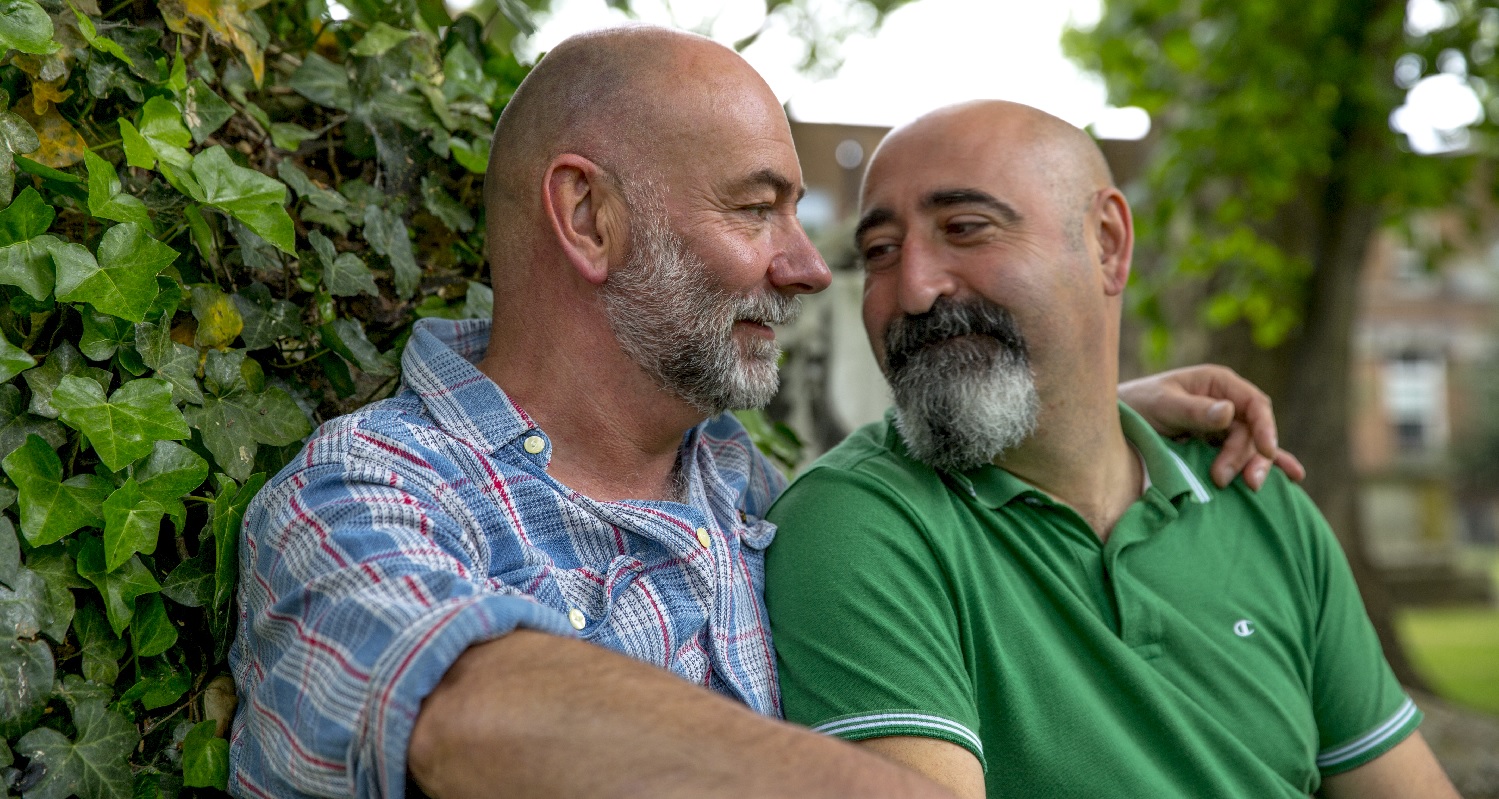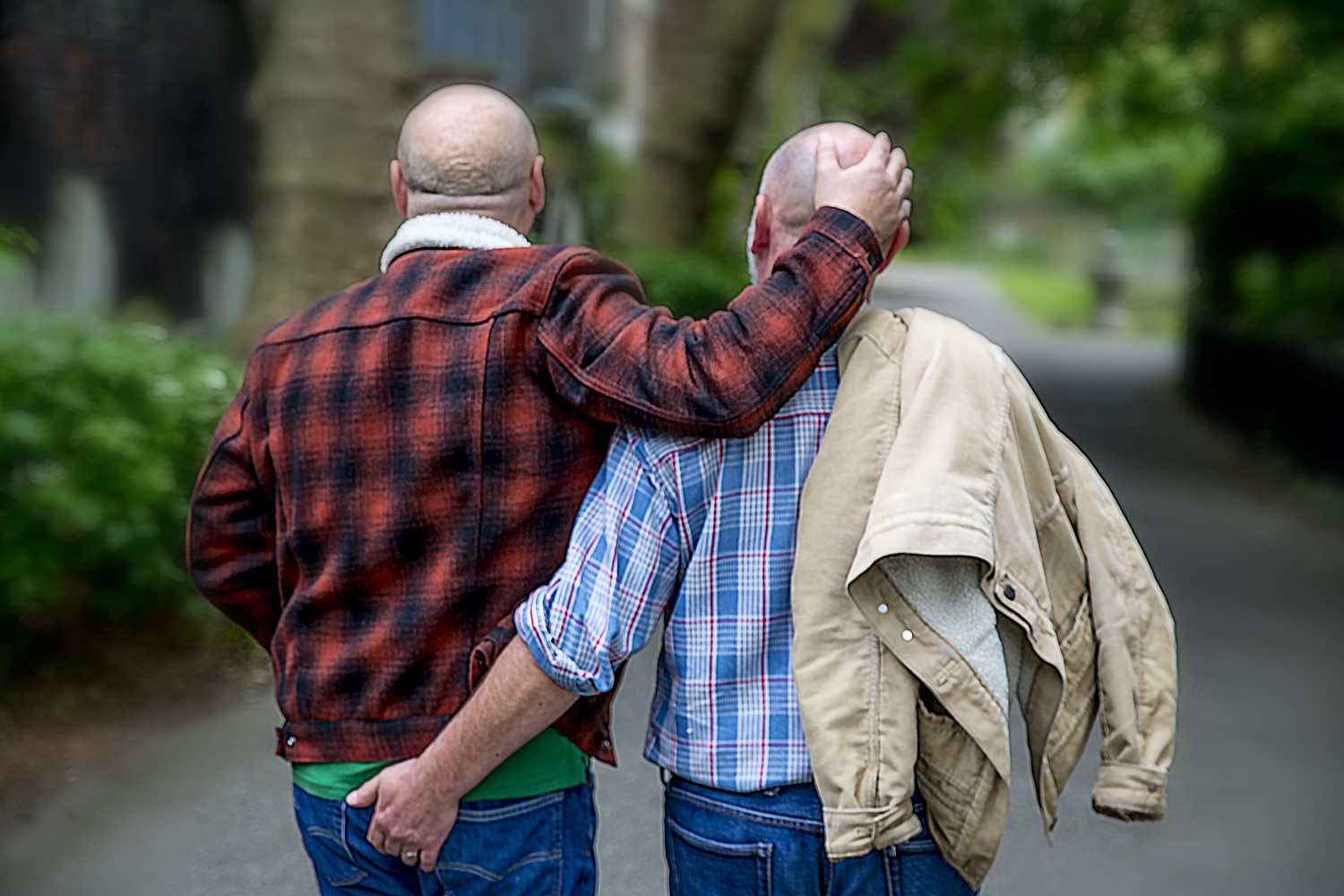Opinion | ‘What I’ve learned in my 30 years living with HIV’
"I told myself that if I had two healthy years I’d be happy. Here we are 30 years later" reflects Trevor Banthorpe

(Words: Trevor Banthorpe; pictures: Trevor and his husband Javier)
For World AIDS Day (tomorrow, 1 December 2020), the HIV Commission – tasked with setting out a vision for ending new HIV cases in England by 2030 – will publish its recommendations for making it a life-changing reality.
Like many gay men of his age, much of Trevor Banthorpe’s life has been intertwined with the HIV epidemic. He looks back on his three decades of living with HIV.
Next July I’ll have been living with HIV for 30 years. My partner Ken, diagnosed a few weeks before me, got just short of five years before the virus took him. I have spent each World AIDS Day since 1995 thinking about him and the time we had together, wondering what could have been.
I’ve seen the HIV epidemic in its entirety from the dark early days of the tombstone adverts, when we could only dare to dream of something that would help turn the tide on death after death after death of young gay men just like myself. Now, all these years later, huge improvements in preventing, testing for and treatment of HIV mean we have the opportunity to end new cases within a decade – if we do enough to make it happen.
The past
But it’s been a long painful road to get here and we must never forget our history: a generation of gay men devastated by a killer virus. Even as the narrative around HIV changes and vast progress is made, the perception of HIV by a large portion of the population remains unchanged. Stigma and self-stigma remain a barrier to testing despite the fact that a person living with HIV can now live a full life expectancy if on effective treatment.
First we were scared of a new disease that was killing young gay men and we didn’t know exactly how you did and didn’t get it. Then, as our understanding grew, dear friends and prominent figures like Freddie Mercury and Kenny Everett were lost to AIDS. Finally, it got as close and as personal as it possibly could. It entered our houses and our bedrooms.
My partner Ken had been ill for some time and struggling with persistent lung infections. His GP prescribed him pills for asthma, which seemed odd to me so I decided to go to the library to read about AIDS, which is what you did when you needed to do some research back in 1990.
I eventually found a medical dictionary on the shelves, and went straight to the section headed ‘AIDS’. Each one of Ken’s symptoms were listed there. I will never forget the feeling of fear that built up in me while sitting in the library fighting back the tears, while thinking how I was going to tell Ken.
Anyhow, I eventually got home and completely broke down while telling him what I had found. The next day he was in hospital with pneumocystis pneumonia – an opportunistic infection due to a severely compromised immune system. He had AIDS. The consultant told us that if he had not been diagnosed and admitted to hospital that day, he probably would’ve been dead within a week as he was going blue due to the lack of oxygen being absorbed by his lungs.
Ken spent two months in hospital before being allowed home. Then, once he was OK, I realised that it was my turn to get tested. I received my positive HIV diagnosis in July 1991.
I nursed Ken for five years before he died in 1995. I was devastated at his death but glad he wasn’t suffering anymore. I told myself that if I had two healthy years I’d be happy. Back then two years was all that was expected. Those two years turned to five, then 10, and here we are 30 years later and I’m dealing with arthritic hips and high blood pressure just like any other middle-aged man. (Things I never thought I would live to deal with!).
If Ken had survived for another 12 months he would in all likelihood still be with us today because what we now know to be effective treatment became available in 1996.

The future
Now, things have changed so much. For me and for HIV. I have a job I love, after completing Terrence Higgins Trust’s back to work programme Work Positive (following a tough few years coming to terms with the fact that I wasn’t about to die), and very happily married to my husband Javier. Despite Covid and all it’s thrown at us, I’m very happy and my health is good even after so many years with HIV.
The change for HIV has been even more pronounced, with the pace of change at a rate Ken and I could never have imagined all those years ago. We’re now not talking about prolonging or extending lives, but about ending all new HIV cases in England within a decade. And that’s not just a pipe dream, the Government has committed to doing it.
And, as someone living with HIV, I have a crucial role to play in that. Because, by taking my treatment every day, I suppress the virus in my blood to such low levels that it’s undetectable. That means I cannot pass it on to anyone else. Or to be more specific, to my husband Javier. If you’re hearing about this for the first time, take a look at Terrence Higgins Trust’s great Can’t Pass It On campaign, which I’ve been very proud to support.
So while yes, it is about PrEP – which is so incredible and I wish had been around much sooner – it is also about fast testing. It’s also about people like me doing what we do each day in taking our medication to achive an undetectable viral load and keeping it that way. Because it’s a funny thing thinking about ‘ending HIV’ by 2030 when I’ll still be here living with HIV and so will the 100,000 others in the UK.

But, as someone who has endured the worst parts of the epidemic and more loss than I would ever wish on anyone, I am so enthusiastic about making that vision a reality. I will take my medication every day for myself, Javier and for the 2030 target. And I’ll keep sharing my story of a full, happy life living with HIV to tackle stigma and stop people from being afraid of getting tested.
The big question for ending HIV is whether there’s enough determination to make it happen. But I don’t doubt there is, at least among people living with HIV and our allies. That’s because every victory won throughout this epidemic has been hard fought for by us, the people living with the virus, and the determination of our allies. We stand on the shoulders of so many lost to AIDS who devoted their final years, weeks and days for fighting for better research, better treatment and more humanity.
I received my HIV diagnosis four months after my 30th birthday and I never thought in a million years that I would be around long enough to see my 60th Birthday, but god willing, that is what I’ll be doing in March. It’s been a funny old 30 years living with HIV and it’s informed so much of my life. But, after everything that’s happened, I’m very glad to see the light at the end of the tunnel and excited to see what the next decade brings. I don’t know about you, but I genuinely think we can do it – and I would love to live to see it happen.
Tomorrow the country’s first HIV Commission, set up by charities Terrence Higgins Trust, National AIDS Trust and Elton John AIDS Foundation, will set out its 20 point plan for how we can end new HIV cases in England by 2030. You can read more about the recommendations on the HIV Commission’s website.
Read the Attitude December issue, available to download and to order globally now.
Subscribe in print and get your first three issues for just £3, or digitally for just £1.54 per issue.



